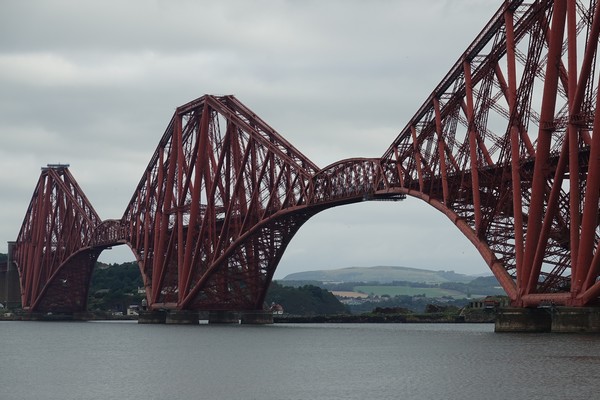Outline of lectures - topics:
1. Direct stiffness method (DSM): Rectangular planar frame under force load. Review and practical process of the calculation.
2. DSM: Deformation load caused by changing temperature and yielding of supports.
3. DSM: Angled frames under force load.
4. DSM: Planar frames under deformation load.
5. DSM: Spatial truss structures.
6. DSM: Beam on a elastic subsoil.
7. DSM: Analysis of the bend bar.
8. DSM: Geometrical nonlinear problems.
9. Moving load: Introduction. Influence lines on the planar solid beam. Moving vehicle on the simple beam. Indirect moving load. Detection of the maximum influence of the moving vehicle.
10. Moving load: Influence lines on the planar bar systems with joints. Continuous beam with embedded joints. Truss structure.
11. Moving load: Influence lines of the static and deformation quantities on the statically indeterminate planar solid beam.
12. The basics of the building dynamics: The importance of the dynamics in the construction practice and the area of application. Defining basic concepts (rigidity, plasticity, damping, linear and nonlinear oscillation, natural frequency).
13. Oscillation of the systems with one degree of freedom – free oscillation undamped and damped.
14. Oscillation of the systems with one degree of freedom – forced oscillation undamped and damped.
Outline of practices:
1. Introduction, matrix operations in the spreadsheets
2. DSM: Local primary vector of end forces. Vector of nodal load. Stiffness matrix of system. Degree of deformation.
3. DSM: Solution of the continuous beams.
4. DSM: Solution of the rectangular frames.
5. DSM: Solution of the angled frames. Yielding supports. Temperature load.
6. DSM: Solution of the truss structures.
7. Application of the computer technology for modeling the subsoil: Beam on an elastic subsoil.
8. Application of the computer technology to solve stability problems.
9. Moving load: Influence lines on the simple beam, console, simple beam with overhanging ends, continuous beam with and without joints, statically determinate and indeterminate truss structure. Using of the influence lines to determine the extreme influence of the not moving load
10. Moving load: Using of the influence lines to determine the extreme impacts of the moving load. Application of the Winkler’s, Load and Šolín’s criterion.
11. Moving load: influence lines on the truss structure and statically indeterminate beam. Application of the influence lines to determine the extreme influence of the moving load.
12. The introduction to the building dynamics: Harmonic movement. Rigidity and plasticity of the structure. Substitute concentrated mass.
13. Application of the computer technology to solve the dynamic problems: Natural frequency and mode shapes of oscillation on the planar solid beam.
14. Application of the computer technology to solve the dynamic problems: Natural frequency and mode shapes of oscillation on the planar bar structure (truss structure
1. Direct stiffness method (DSM): Rectangular planar frame under force load. Review and practical process of the calculation.
2. DSM: Deformation load caused by changing temperature and yielding of supports.
3. DSM: Angled frames under force load.
4. DSM: Planar frames under deformation load.
5. DSM: Spatial truss structures.
6. DSM: Beam on a elastic subsoil.
7. DSM: Analysis of the bend bar.
8. DSM: Geometrical nonlinear problems.
9. Moving load: Introduction. Influence lines on the planar solid beam. Moving vehicle on the simple beam. Indirect moving load. Detection of the maximum influence of the moving vehicle.
10. Moving load: Influence lines on the planar bar systems with joints. Continuous beam with embedded joints. Truss structure.
11. Moving load: Influence lines of the static and deformation quantities on the statically indeterminate planar solid beam.
12. The basics of the building dynamics: The importance of the dynamics in the construction practice and the area of application. Defining basic concepts (rigidity, plasticity, damping, linear and nonlinear oscillation, natural frequency).
13. Oscillation of the systems with one degree of freedom – free oscillation undamped and damped.
14. Oscillation of the systems with one degree of freedom – forced oscillation undamped and damped.
Outline of practices:
1. Introduction, matrix operations in the spreadsheets
2. DSM: Local primary vector of end forces. Vector of nodal load. Stiffness matrix of system. Degree of deformation.
3. DSM: Solution of the continuous beams.
4. DSM: Solution of the rectangular frames.
5. DSM: Solution of the angled frames. Yielding supports. Temperature load.
6. DSM: Solution of the truss structures.
7. Application of the computer technology for modeling the subsoil: Beam on an elastic subsoil.
8. Application of the computer technology to solve stability problems.
9. Moving load: Influence lines on the simple beam, console, simple beam with overhanging ends, continuous beam with and without joints, statically determinate and indeterminate truss structure. Using of the influence lines to determine the extreme influence of the not moving load
10. Moving load: Using of the influence lines to determine the extreme impacts of the moving load. Application of the Winkler’s, Load and Šolín’s criterion.
11. Moving load: influence lines on the truss structure and statically indeterminate beam. Application of the influence lines to determine the extreme influence of the moving load.
12. The introduction to the building dynamics: Harmonic movement. Rigidity and plasticity of the structure. Substitute concentrated mass.
13. Application of the computer technology to solve the dynamic problems: Natural frequency and mode shapes of oscillation on the planar solid beam.
14. Application of the computer technology to solve the dynamic problems: Natural frequency and mode shapes of oscillation on the planar bar structure (truss structure
